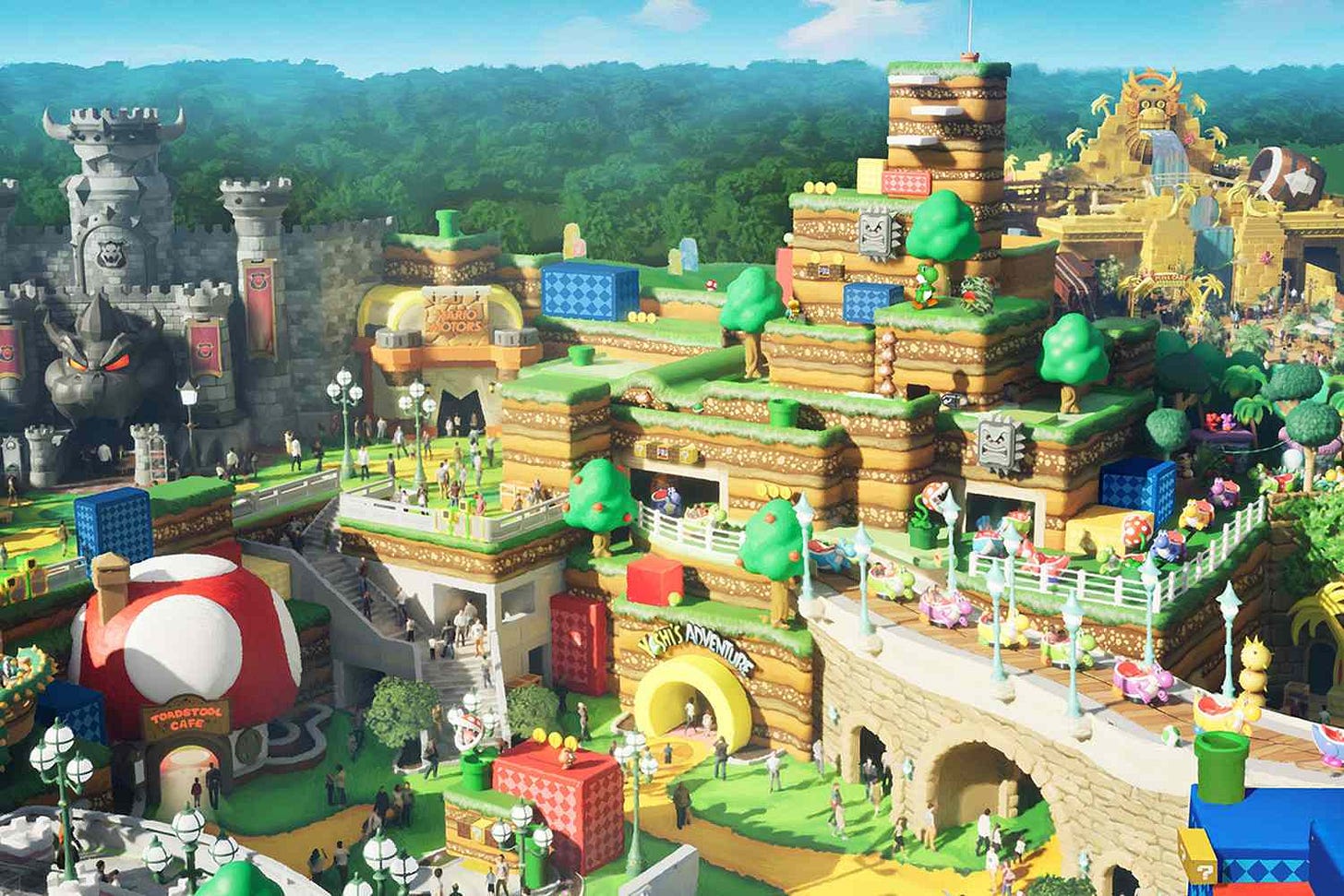Is Super Nintendo World Already Outdated?
Why Universal might’ve missed the mark by playing it safe with Mario.
Super Nintendo World is, by any measure, a marvel of modern theme park design. Stepping through the iconic green pipe into the vibrant, kinetic world of the Mushroom Kingdom is a genuinely magical experience. It’s actually brilliant. The colors pop, the piranha plants bob, the attention to detail is immaculate. It is, for the most part, perfect. But as the initial dopamine hit of nostalgia wears off after several visits, a strange and nagging question begins to bubble up from the warp pipe of reality: For a brand new land in a brand new park, is this all… a little outdated?
The fundamental issue with Epic Universe’s Super Nintendo World is that it’s not truly new. It is an almost perfect-pixel recreation of the land that opened in Universal Studios Japan in 2021. While there’s nothing inherently wrong with cloning a successful design, the context is critical. What works for a Japanese family audience does not necessarily translate seamlessly to the thrill-seeking expectations of American tourists, especially the ones who form the core of Nintendo’s fan base.
The problem isn't the execution; it's the demographic calculus. Universal built a land for seven-year-olds, but the people with the deepest, most nostalgic connection to the property are the millennials who grew up with it, the now 30- and 40-somethings who have been waiting their entire lives to jump into this world. And what did we find waiting for us? Two rides that feel, to an adult, surprisingly tame.
Mario Kart: Bowser’s Challenge is a technological wonder wrapped around a ride experience that feels like it’s perpetually stuck in 50cc. The augmented reality glasses are brilliant, the interactive shooting mechanic is fun, but the physical ride vehicle itself putters along at a pace that inspires less adrenaline and more mild curiosity. Across the land, Yoshi’s Adventure is an even more perplexing case—a classic, slow-moving omnimover that offers lovely views of the kingdom but possesses all the thrilling intensity of a ride on the PeopleMover. Both are undeniably “family-style” attractions. But in a park that boasts the VelociCoaster next door and bills itself as "Epic," it feels like a glaring mismatch of expectations.
The park’s new addition, Donkey Kong Country, only highlights this strange dichotomy. The land is gorgeous, a stunning recreation of the beloved video game jungle. But there’s almost nothing to do there. It exists as a beautiful, sprawling home for one single attraction: Mine-Cart Madness. And because it’s the only ride in the entire land—and the only attraction in all of Super Nintendo World with a semblance of real speed—the wait times are astronomical, often ballooning to several hours. The ride itself is a marvel of engineering, a coaster that appears to jump gaps in the track, but it was clearly designed as a “thrill notch up for children,” a bridge between a kiddy coaster and a true behemoth. For the adults who were promised a wild mine cart ride, it can feel like another case of pulled punches.
This is the central tension of Super Nintendo World: it’s a land not quite built for the generation that loves it most. It’s a playground built for our kids, not for the kid still inside of us. Universal seems to be doubling down on this strategy. The persistent rumors for future expansions don't point towards a high-speed F-Zero coaster or a Metroid-themed drop tower. Instead, they point to a family-friendly Luigi’s Mansion dark ride and a grand, story-based (but likely coaster-free) Legend of Zelda attraction. Both sound wonderful, but they cement the land’s identity as a place for gentle adventures, not epic thrills.
Perhaps Universal played it safe. They chose the widest possible audience, ensuring no child would be too scared to ride. But in doing so, they created a land that feels perpetually out of sync with the people who queued up for hours, clutching their Power-Up Bands with childhood glee. They built a beautiful, charming, and wildly popular land that somehow, in its effort to please everyone, missed the mark for its most devoted fans. It’s a stunning achievement that already feels like a relic of a more cautious time.



